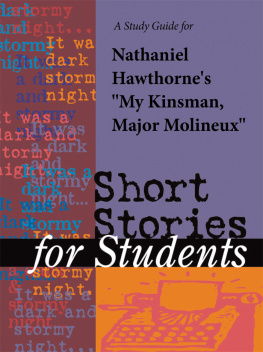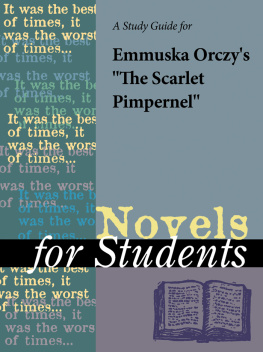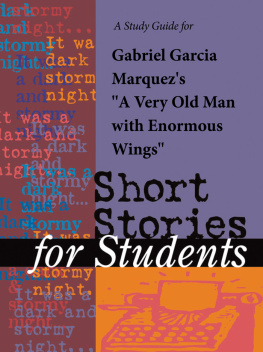TABLE OF CONTENTS
Guide
Short Stories for Students, Volume 11
Staff
Editor: Jennifer Smith.
Contributing Editors: Anne Marie Hacht, Michael L. LaBlanc, Ira Mark Milne, Elizabeth Thomason.
Managing Editor: Dwayne D. Hayes.
Research: Victoria B. Cariappa, Research Manager. Cheryl Warnock, Research Specialist. Tamara Nott, Tracie A. Richardson, Research Associates. Nicodemus Ford, Sarah Genik, Timothy Lehnerer, Ron Morelli, Research Assistants.
Permissions: Maria Franklin, Permissions Manager. Jacqueline Jones, Julie Juengling, Permissions Assistants.
Manufacturing: Mary Beth Trimper, Manager, Composition and Electronic Prepress. Evi Seoud, Assistant Manager, Composition Purchasing and Electronic Prepress. Stacy Melson, Buyer.
Imaging and Multimedia Content Team: Barbara Yarrow, Manager. Randy Bassett, Imaging Supervisor. Robert Duncan, Dan Newell, Imaging Specialists. Pamela A. Reed, Imaging Coordinator. Leitha Etheridge-Sims, Mary Grimes, David G. Oblender, Image Catalogers. Robyn V. Young, Project Manager.Dean Dauphinais, Senior Image Editor. Kelly A. Quin, Image Editor.
Product Design Team: Kenn Zorn, Product Design Manager. Pamela A. E. Galbreath, Senior Art Director. Michael Logusz, Graphic Artist.
Copyright Notice
Since this page cannot legibly accommodate all copyright notices, the acknowledgments constitute an extension of the copyright notice.
While every effort has been made to secure permission to reprint material and to ensure the reliability of the information presented in this publication, Gale neither guarantees the accuracy of the data contained herein nor assumes any responsibility for errors, omissions, or discrepancies. Gale accepts no payment for listing; and inclusion in the publication of any organization, agency, institution, publication, service, or individual does not imply endorsement of the editors or publisher. Errors brought to the attention of the publisher and verified to the satisfaction of the publisher will be corrected in future editions.
This publication is a creative work fully protected by all applicable copyright laws, as well as by misappropriation, trade secret, unfair competition, and other applicable laws. The authors and editors of this work have added value to the underlying factual material herein through one or more of the following: unique and original selection, coordination, expression, arrangement, and classification of the information. All rights to this publication will be vigorously defended.
Copyright 2001
Gale Group,
27500 Drake Road,
Farmington Hills, MI 48331-3535
All rights reserved including the right of reproduction in whole or in part in any form.
ISBN 0-7876-4263-0
ISSN 1092-7735
Printed in the United States of America.
10 9 8 7 6 5 4 3 2 1
My Kinsman, Major Molineux
Nathaniel Hawthorne
1832
Introduction
My Kinsman, Major Molineux was first published in the 1832 issue of The Token, anannual collection of fiction, poetry, and essays generally bought as a Christmas present. It was one of four stories by Nathaniel Hawthorne in the issue, but like all of the pieces in the magazine, it did not carry the authors name. The story was not a favorite of the authors, and it drew no special attention from readers. It was not included in either of Hawthornes first two collections of short stories, Twice-Told Tales (1842) and Mosses from an Old Manse (1846). Finally in 1851 it was published in the collection The Snow-Image and Other Twice-Told Tales. Thestory was not especially popular during Hawthornes lifetime, being greatly overshadowed by the novels that the writer produced in the 1850s.
In the second half of the twentieth century, however, the story took on a new life. Appreciated for its gentle irony and its glimpse at life in colonial New England, My Kinsman, Major Molineux has been widely anthologized, and has become a staple of literature courses at the high school and college levels. The story of a young man from the country who goes to the city to find his relative is typical in many ways of early nineteenth century American literature. My Kinsman, Major Molineux is held as an example of the themes, styles, and techniques of the period, and as a sample of the talents of one of Americas most important writers.
Author Biography
When Nathaniel Hawthorne was born in Salem, Massachusetts, in 1804, the United States was new and unformed. In New England, where his family lived, the somber influence of the Puritan settlers was still strong, and Hawthornes life and fiction were always marked by undertones of a brooding pessimism. His father was a sea captain who died in Dutch Guiana when his son was four years old. Nathaniel was raised by his eccentric mother in the homes of various relatives, and he spent most of his time alone.
After graduating from Bowdoin College in 1825, Nathaniel was determined to make his way as a writer. For ten years he lived with his family and devoted himself to reading, and to writing allegorical and historical tales of life in colonial New England. During this time, he changed the spelling of his family name from Hathorne to Hawthorne in an attempt to distance himself from an ancestor deeply involved in the prosecution of the Salem witch trials of the 1690s. His first publication was a novel, Fanshawe (1828), published anonymously at his own expense. It tells the story of a college student who falls in love, gives the young woman up to another man, and dies. As most first novels are, the work was semi-autobiographical and immature. When Hawthorne recognized the failings of his first novel, he bought up all the unsold copies and burned them.
He next turned his energies to short stories, exploring the nature of moral decay. Several were purchased, for a few dollars each, by S. G. Goodrich, the editor of an annual miscellany, The Token. The1832 edition of The Token includedfour Hawthorne stories, including My Kinsman, Major Molineux, although the authors name did not appear. Goodrich preferred to leave the stories unsigned so his readers would not know how much of his material had come from one writer. Several of the Token storieswere later gathered into Hawthornes collection Twice-Told Tales (1837), which proudly bore the authors name, but My Kinsman, Major Molineux was not published again until 1851, in a collection titled The Snow Image.
Hawthorne tried for twelve years to earn a living as a writer before he was forced to find other employment. He married in 1842, at the age of thirty-eight, worked as a surveyor at the Custom House in Salem, and continued to publish short stories. When he lost his job in 1849, he settled down to write what became his greatest work, The Scarlet Letter (1850). This well-received novel was soon followed by The House of the Seven Gables (1851), The Snow Image, and The Blithedale Romance (1852). For the rest of his life, Hawthorne was free from worries about money, and he was able to concentrate on writing, traveling, family life, and his friendships with other writers of the day, including Herman Melville and Henry Wadsworth Longfellow. He died in his sleep on May 19, 1864.





















